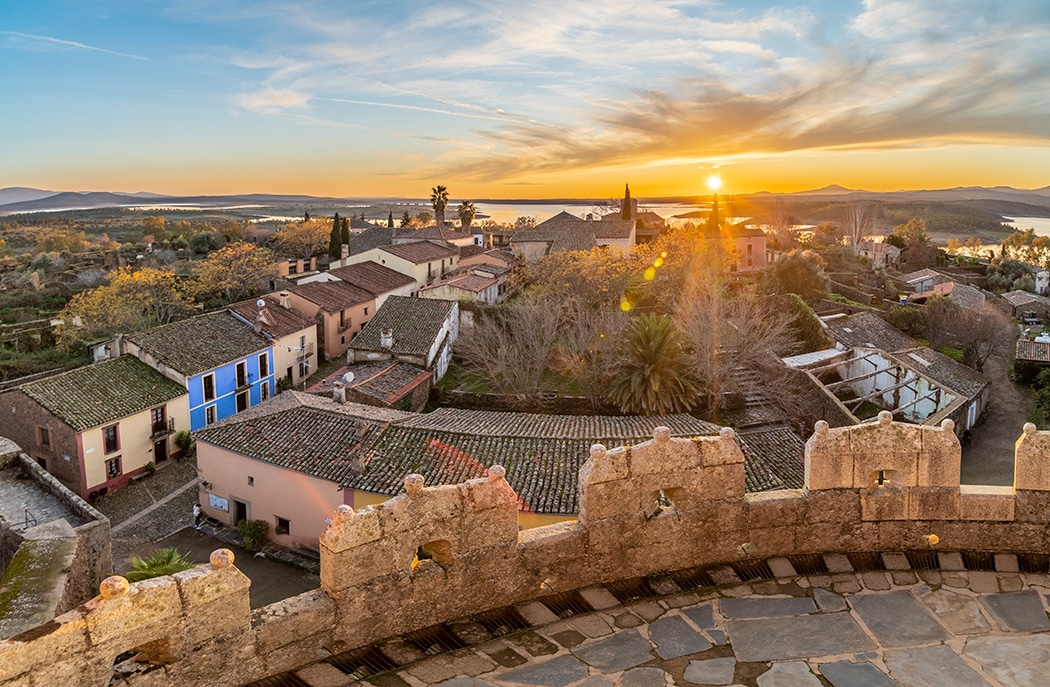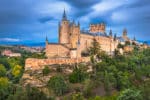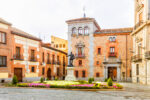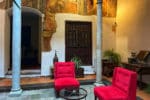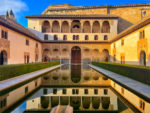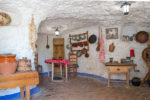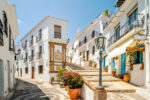Planning to visit some medieval walled cities in Spain? Have limited time? These 15 cities and towns can be visited on day trips from major cities.
With its idyllic coastline and expansive mountain ranges (home to the Iberian Lynx) to imperial capitals, historic towns, and Andalusian white villages, Spain is one of the most beautiful countries in Europe. The reason for the diversity of Spanish cultural heritage is the fact that Spanish history has been shaped by powerful empires that conquered it over the millennia.
Romans occupied Spain for 700 years and the Arabs for another 800. The Arab occupation, in particular, left many traces on the cultural landscape of Spain. During these centuries, Christian monarchs waged constant wars on the Arab conquerors with various degrees of success.
As a result, many of the cities in medieval Spain were fortified with defence walls, built either by the Arabs for protection from the Christians or by the Christian monarchs for protection from the Arabs. Many of these walled cities survived almost intact to this day and were then carefully restored to preserve their medieval charm. If you are looking for a walled city near Madrid – Avila has the most complete defence walls of any walled cities in Spain.
Today these medieval walled cities in Spain offer an opportunity to time travel and explore the tangible richness of Spain’s past. Below are 15 of the most picturesque walled cities in Spain that can easily be visited on day trips from the major cities. It’s a great option if you are trying to see Spain in a week or less. Or, you can combine visits to a few of these gorgeous cities into one of the most spectacular road trips or weekend breaks in Spain.
Avila (Castile and Leon)
Of all the walled cities in Spain, Avila has the best-preserved defence walls. These impressive fortifications completely encircle the town, stretching over 2,5 kilometres. Just over a 100 kilometers northwest from the capital, Avila is the most spectacular walled city near Mardrid.
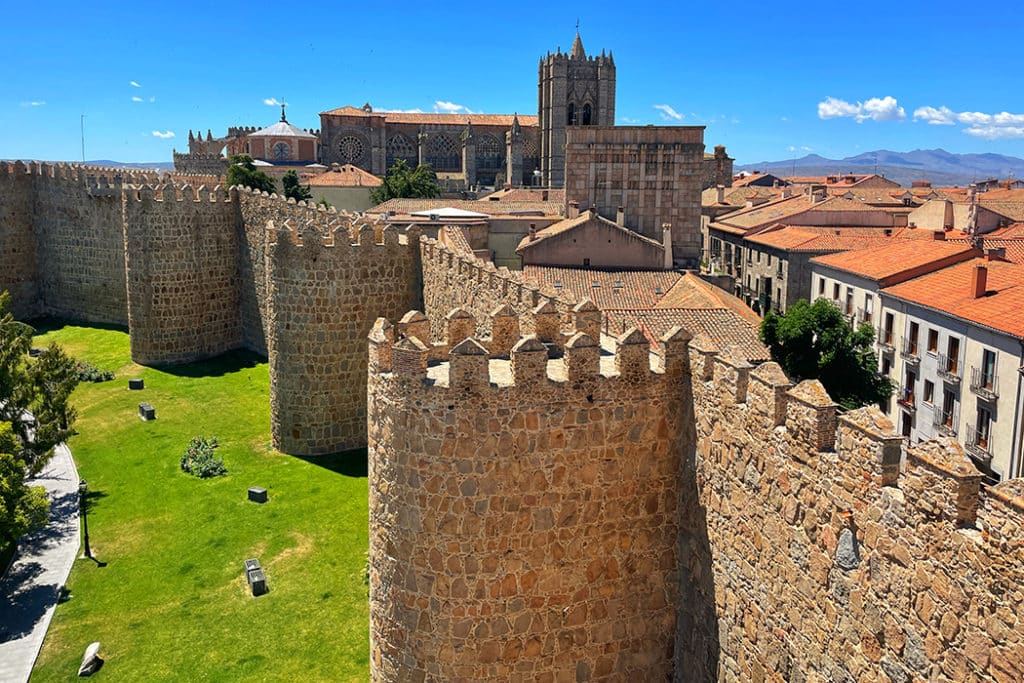
Built by the Christian kings after Avila was re-conquered from the Arabs in the 12th century, the Avila walls and the old town they guard still appear today as they did nine centuries ago. Their charm is safeguarded by the status of a UNESCO World Heritage site.
The monumental Avila walls have over 2,500 battlements, 87 towers and nine gates. You can walk along the walls’ entire perimeter or explore 1,700 meters of the battlement walkway for a birds-eye view of the city. Or better yet, do both.
Avila is easy to visit on a day trip from Madrid, either by train, bus or on an organized tour. You can learn more in my guide to Things to do in Avila on a day trip from Madrid.
What not to miss in Avila
- Basilica of St Vincent – a 12th-century church with a dark secret in its crypt. It is considered to be one of the best examples of Romanesque architecture in Spain.
- Avila Cathedral – a monumental Romanesque cathedral that was built to double up as a fortress by being built into the Avila city wall
- Avila old town – a wonderfully-preserved medieval town with many churches dedicated to the legacy of Santa Teresa.
Lugo (Galicia)
While Avila walls are extraordinarily complete, the walls of Lugo are ancient. Built in the 3rd century, they date back to Roman times, and they are still largely intact.
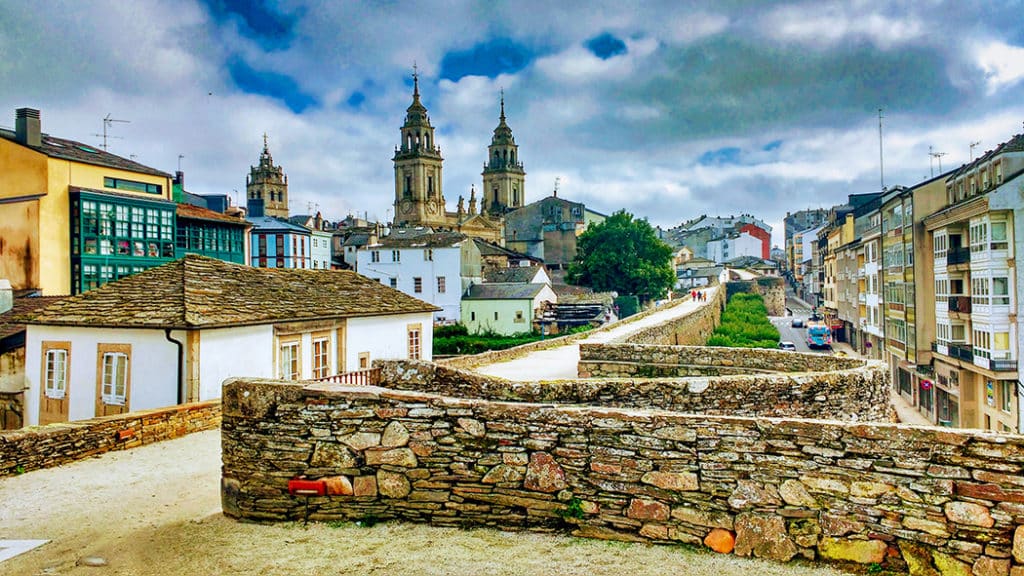
In fact, Lugo is the only city in the world still entirely encircled by intact Roman walls. These monumental walls stretch over 2 kilometres around the historic town centre. They are punctuated by almost 100 towers, half of which weathered the 17 centuries rather well, while the other half have partially collapsed.
Lugo walls were added to the UNESCO World Heritage list in 2000 as “the finest example of late Roman fortifications in Western Europe.”
The walkway along the top of the walls is so wide that it feels like a pedestrian street. In fact, this is exactly how the locals use it. You can walk around the entire old town along the walls.
Lugo can be visited on a day trip from Santiago de Compostela by bus or on an organized tour.
What not to miss in Lugo
- Roman Bridge – an arched stone bridge over the Minho River originally built by the Romans.
- Lugo Cathedral – built within the Roman wall, the cathedral dates back to 1129
- Roman baths below Hotel Balneario de Lugo – built in approximately 15BC over a natural hot spring
Tossa Del Mar (Catalonia)
Lying along Costa Brava, Tossa Del Mar is one of Spain’s most beautiful seaside resorts. But there is more to the town than aquamarine waterways and Sandy beaches.
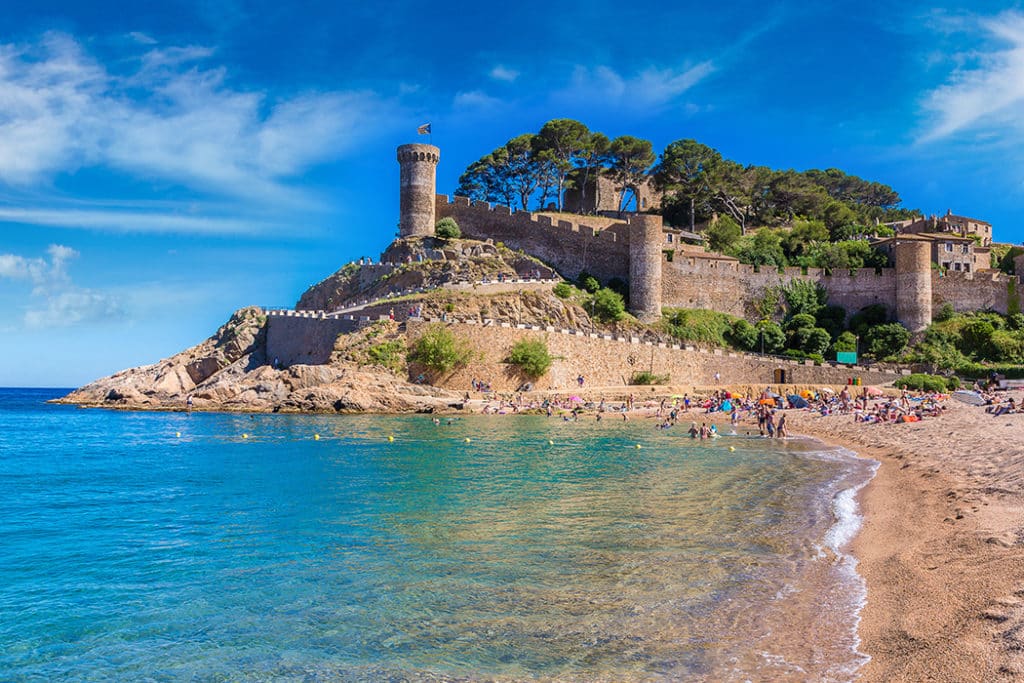
Rising from the beach and the sea, like a fairytale sand castle, are the 12th-century defence walls and the fortified Tossa Castle. The entire town of Vila Vella Enceinte, perched at the foot of the castle, used to be surrounded by the walls.
Today only some sections of the walls remain standing, but their unusual seaside setting makes them an extraordinary site to see. You can admire the walls while lazing on the beach, or for a closer look, go for a stroll in the old town.
Tossa Del Mar is one of the most picturesque walled towns in Spain and can be easily visited on a day trip from Barcelona, by train or with an organized tour. There are plenty of things to do in Barcelona, but if you needed another reason to visit this gorgeous city, its proximity to some of the most spectacular walled cities in Spain is a good one.
What not to miss in Tossa Del Mar
- Explore wide sandy beaches and intimate rocky coves. If you are short on time, the beach with the best views of the fortress and the walls is Platja Gran. And Cala Futadera is one of the most picturesque bays.
- Walk up to the tower of Can Magi for stunning views of the town and the coastline.
- Get lost in the maze of historic streets of Vila Vella – the perfectly-preserved medieval village within the city walls.
Toledo (Castilla-La Mancha)
Toledo is the most famous Spanish medieval town and another UNESCO World Heritage site. Toledo’s walls have perhaps the richest history among the walled cities in Spain. The first walls were built by the Romans, and you can still see the remnants of the Roman walls today.
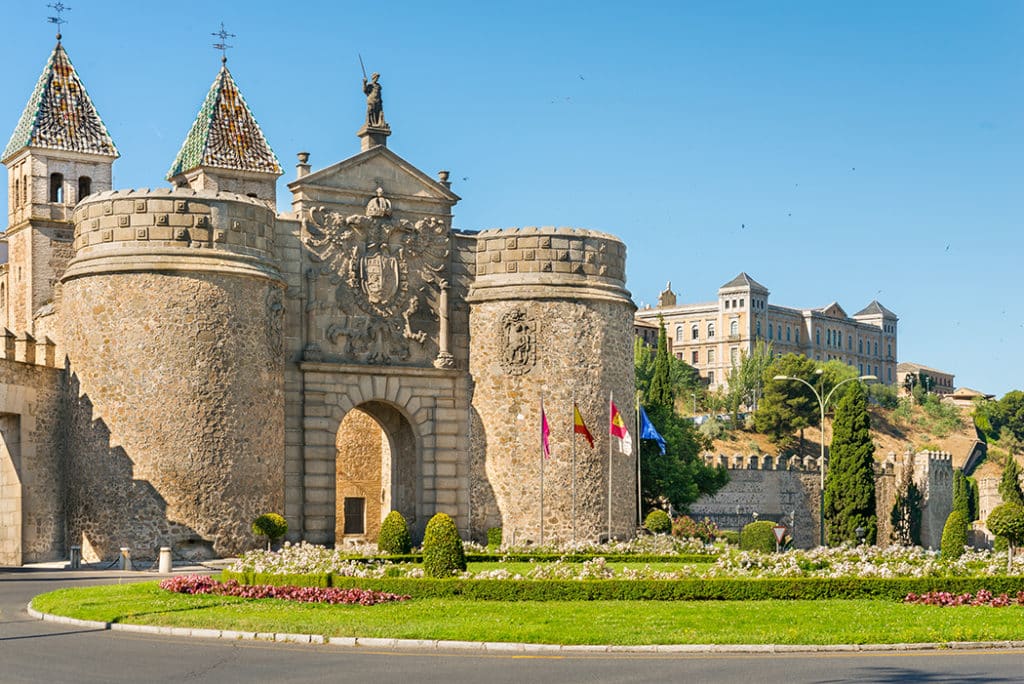
The Arabs enlarged the walls during their 350-year reign, and after the Reconquista, the Christian Monarchs expanded and strengthened the walls again.
The most striking feature of the Toledo walls is their numerous gates. The must-see gates are the Puerta del Sol, built at the end of the 14th century in Mudéjar style, and the two Puertas de Bisagra.
The older (and plainer) Puerta de Bisagr was built in the 900s by the Arabs. And the newer and grander Puerta Nueva de Bisagra was built by the Christian kings and features a triumphal arch bookended by two circular towers.
Toledo is an easy and eventful day trip from Madrid either by train or on an organised tour.
What not to miss in Toledo
- Toledo Cathedral – built over 250 years, Toledo Cathedral is considered the best example of High Gothic architecture in Spain. The interior of the cathedral is adorned with works of El Greco, Goya and Velazquez
- Mezquita Cristo de La Luz – a picturesque mosque located near Puerta del Sol. It was built in 999 by the Arabs and later converted into a church.
- Monastery of San Juan de Los Reyes – exquisitely decorated 15th-century monastery in the heart of Toledo’s Jewish Quarter
- Toledo Alcazar – a monumental fortress dating back to Roman times.
- Roman Bridge – an arched stone bridge framed by the Castle of San Servando and Toledo Alcazar
Albarracin (Aragon)
With its pink-hued houses, churches, fortress and walls, Albarracin is one of the most unique walled cities in Spain. A former capital of the Taifa Moorish Kingdom, Albarracin is perched on a rocky promontory atop a high hill surrounded by the Guadalaviar River.
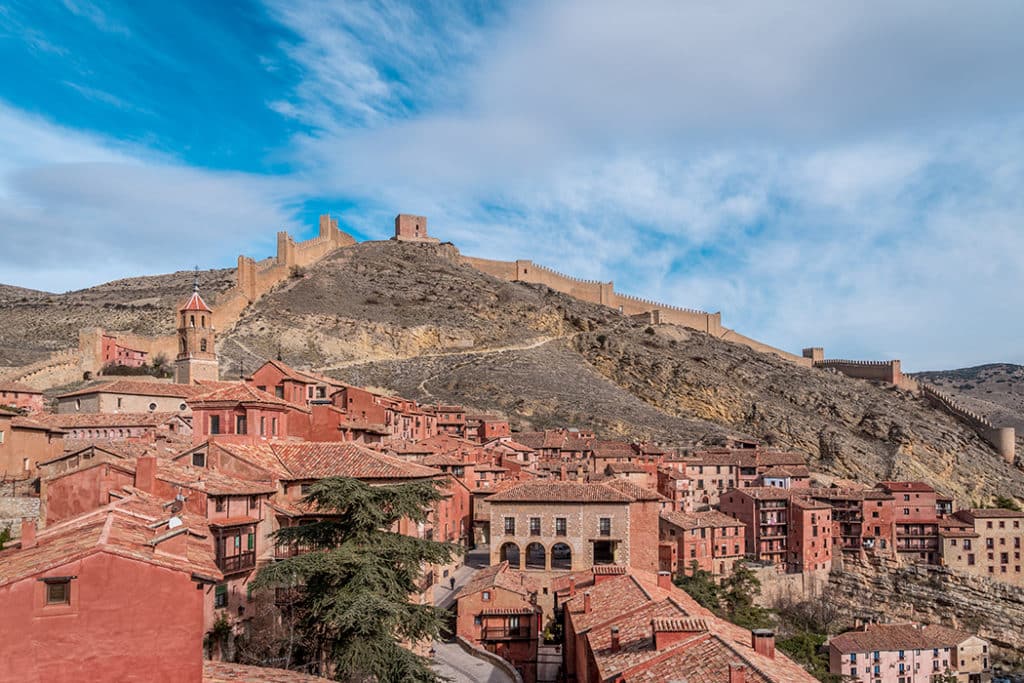
The best way to experience the walled city of Albarracin is to hike the entire perimeter of the city walls. The trail is fairly rough in places, so it’s a hike rather than a walk, but you can complete it in about 2 hours, and the views of the town from the top of the hill will make you glad you’ve done it.
Albarracin is not as popular with tourists as many of the other cities on this list, so don’t be surprised to have the town to yourself. You can easily spend a couple of days exploring Albarracin and the hiking trails on the outskirts of town or visit it on a day trip from Cuenca.
Alternatively, you could spend a night in Albarracin and take a break from the tourist crowds. There are some gorgeous accommodation options in Albarracin.
What not to miss in Albarracin
- The Castle (Castillo Musulmán De Albarracín) – A 9th-century castle perched on a dramatic cliff top.
- Cathedral of Albarracin – a 16th-century cathedral built in a mix of Gothic, Renaissance and Baroque styles
- Perez and Toyuela Home Museum – a preserved house from the 17th century that gives you a glimpse into the lifestyles of the Albarracin nobility and their servants.
Trujillo (Extremadura)
Located between Madrid and Lisbon, on top of a mountain ridge, Trujillo is a picturesque town with Roman, Muslim, and Catholic history. Its impressive fortifications landed the town the role of Castlerly Rock in the seventh season of HBO’s Game of Thrones.
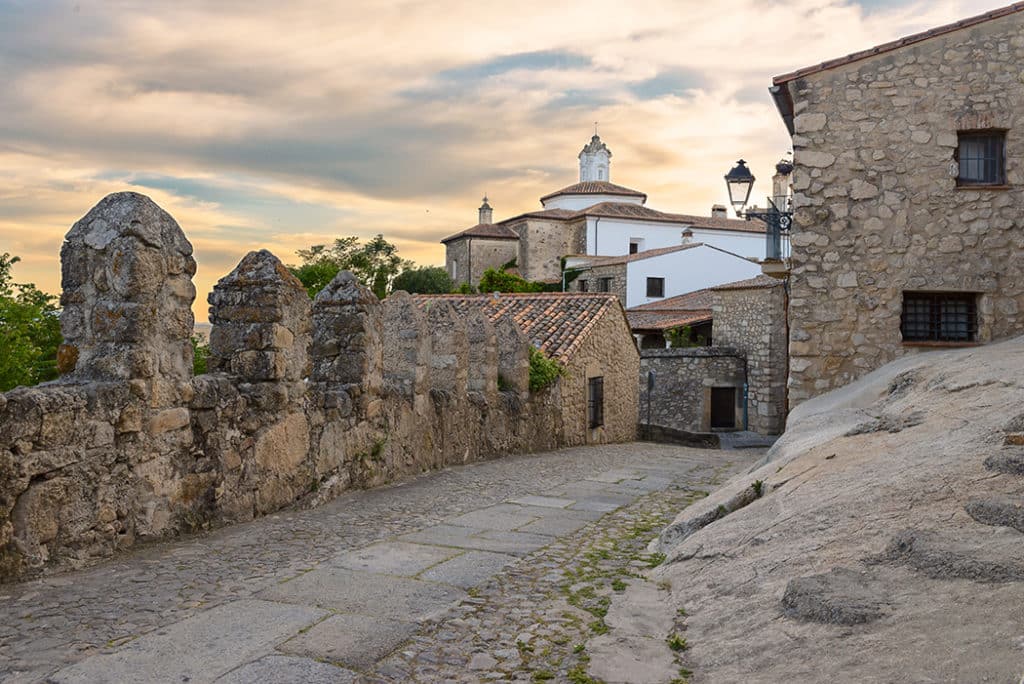
The walls of Trujillo were built by the Arabs and protected the city from the Christian armies for 500 years. When the Christian monarchs finally reconquered the city in 1232, Trujillo came to prominence as the land of conquistadors. Perhaps the most symbolic monument in Trujillo is the statue of Francisco Pizarro on horseback – the Spanish explorer who conquered the Inca Empire.
Trujillo is just under 3 hours away from Madrid, either by train or by bus and 2 hours away from Toledo. You could visit it on a long day trip from the capital or spend a couple of days in town and explore the walking trails in the surrounding mountains. Whatever you choose, don’t miss the Game of Thrones tour of Trujillo castle.
What not to miss Trujillo
- Castle – an imposing fortified castle and filming location for Games of Thrones’ Castlerly Rock scenes
- Plaza Mayor – one of the prettiest squares in Spain
- Statue of Francisco Pizarro on Plaza Mayor
Penafiel (Castile-Leon)
The striking white walls of Penafiel actually belong to Penafiel castle, which is 210 meters long and only 35 meters wide. So it looks more like a super-wide wall than a building.
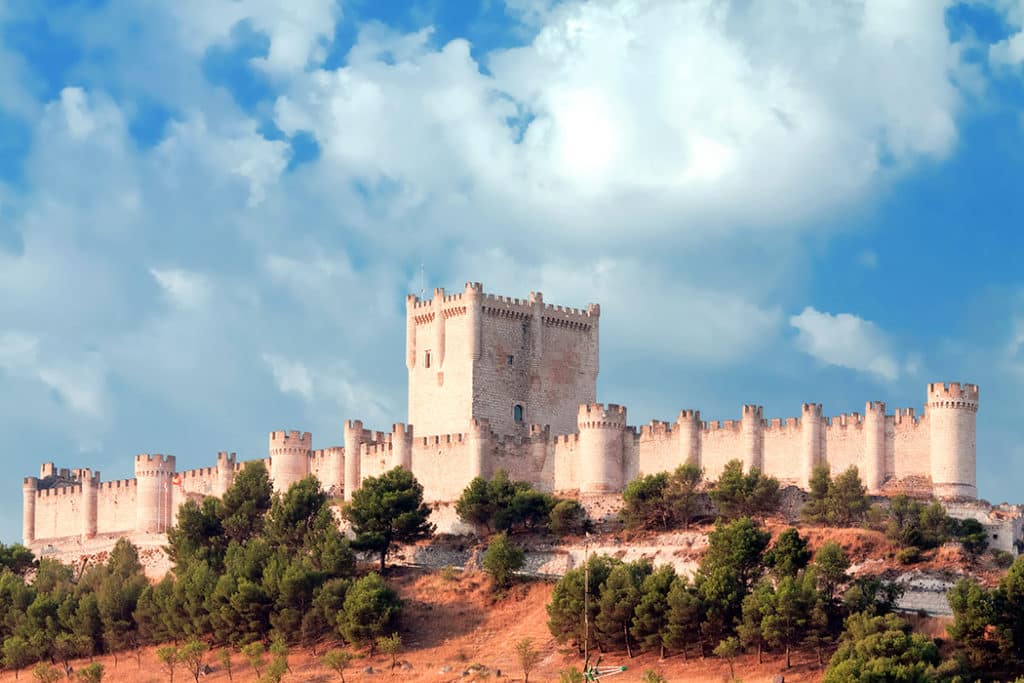
Built as a defence structure against the Arabs, Penafiel castle sits on top of a hill above the town. So technically, the town is outside the walls. But there is plenty to see inside.
Penafiel lies within the Ribera del Duero wine region, so it comes as no surprise that there is a wine museum (Museo Provincial del Vino) inside the castle. So if a wine-tasting experience inside a medieval castle sounds like a good idea, Penafiel is your kind of destination.
The city can be visited on a day trip from Madrid, Valladolid, and Aranda. You can also combine history with wine tasting by joining a day tour from Madrid, that takes in Penafiel and two wineries.
What not to miss in Penafiel
- Plaza del Coso – a medieval square with a bullfighting ring surrounded by rustic houses
- Wine Museum in Penafiel Castle
- Casa Museo de la Ribera – an ethnographic museum offering a glimpse into the lives of some of the poorer Penafiel residents in the 19th and early 20th centuries.
Segovia (Castile-Leon)
Segovia is a fairytale-like medieval town set around an enormous Roman aqueduct. The walls of Segovia tend to be overshadowed by the town’s more famous attractions, but they are an impressive part of Segovia’s medieval character.
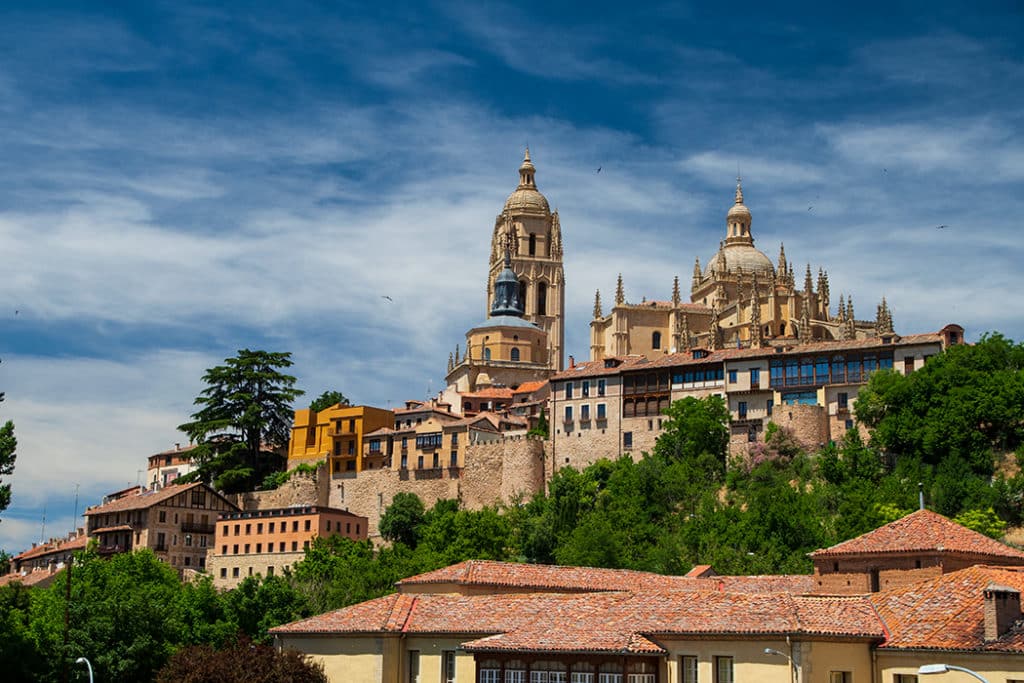
Built to defend Segovia from the Arab invaders, these impressive defence structures are almost 3.5 km long, 3.5 meters thick and reach 10 meters in height from their base down the hill to the top of the battlement.
A little-known fact is that tombstones from the Roman necropolis were used in the construction of the walls.
The most intact and impressive portion of the walls lies just to the west of the Cathedral, near the Gate of San Andrés (Puerta de San Andres).
Lying less than 100 km north of Madrid, Segovia is an easy spectacular day trip from Madrid. Read my guide to planning a Day Trip from Madrid to Segovia. You’ll reach it in just over an hour by train or bus. Or you can explore Segovia on an organised day tour.
What not to miss in Segovia
- The aqueduct of Segovia – an enormous Roman aqueduct in the middle of the medieval city.
- Alcazar of Segovia – arguably, the most beautiful castle in Spain
- Cathedral of Segovia – stunning and enormous 16th-century Gothic cathedral and fortress in one.
- Iglesia de la Vera Cruz – a Romanesque church from the time of the Crusaders
Cuellar (Castile-Leon)
Like the nearby Penafiel, Cuellar is a white-walled city. But unlike Penafiel, it has two distinct walls: the citadel wall that surrounds the castle and the city wall that encircles the entire town.
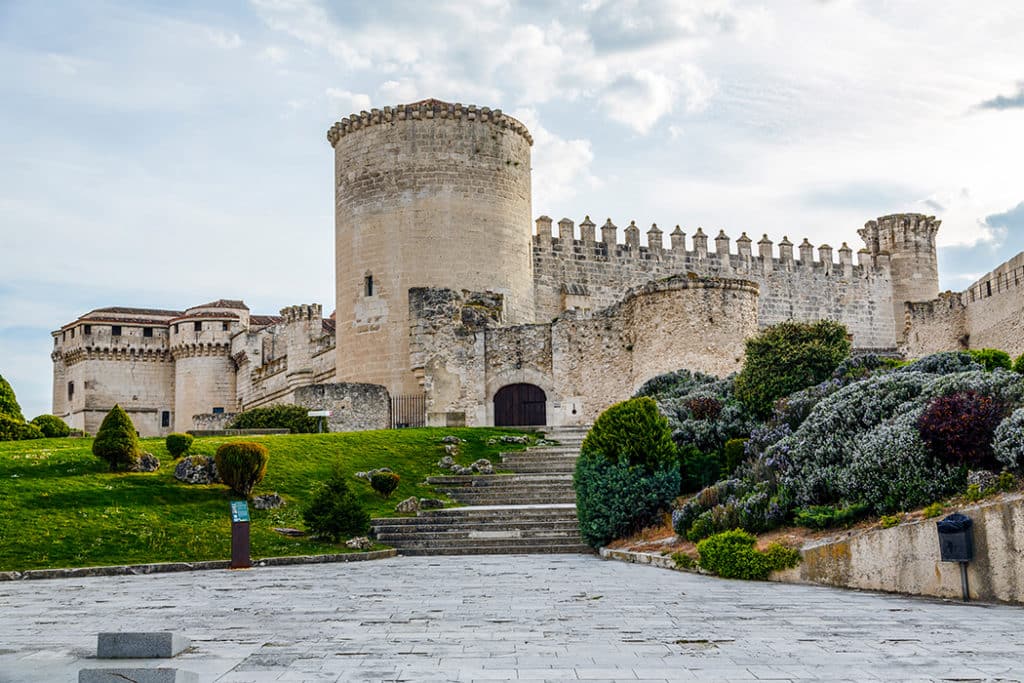
The older parts of the walls – the Gate of Saint Basil, the fortified tower, the Arch of Saint Andrew, and the remains of the Gate of the Caves are the original Moorish walls that date back to the 12th century. In the 13th century, Cuéllar became one of the most important towns in northern Spain, and in the 14th and 15th centuries, the walls were strengthened and extended by the Christian kings.
Today, you can access about 400 metres of the white city walls for a small fee and enjoy spectacular views of the Dukes of Alburquerque castle and the town.
You can easily combine visits to Cuellar and Penafiel into a single-day trip from Madrid. Or spend a day in each town.
What not to miss in Cuellar
- Castle of the Dukes of Albuquerque -an 11th-century castle that belonged to Álvaro de Luna and the first Dukes of Alburquerque.
- San Esteban Church – 13th-century church, part of the citadel wall built in Mudejar style.
Granadilla (Extremadura)
Granadilla is a ghost town about 300 km from Madrid and one of the most unusual walled cities in Spain. Founded by the Arabs in the 9th century, the town had been inhabited until 1956, when Franco’s government decided to build a reservoir nearby and appropriated the land, forcing local people to leave the town eventually.
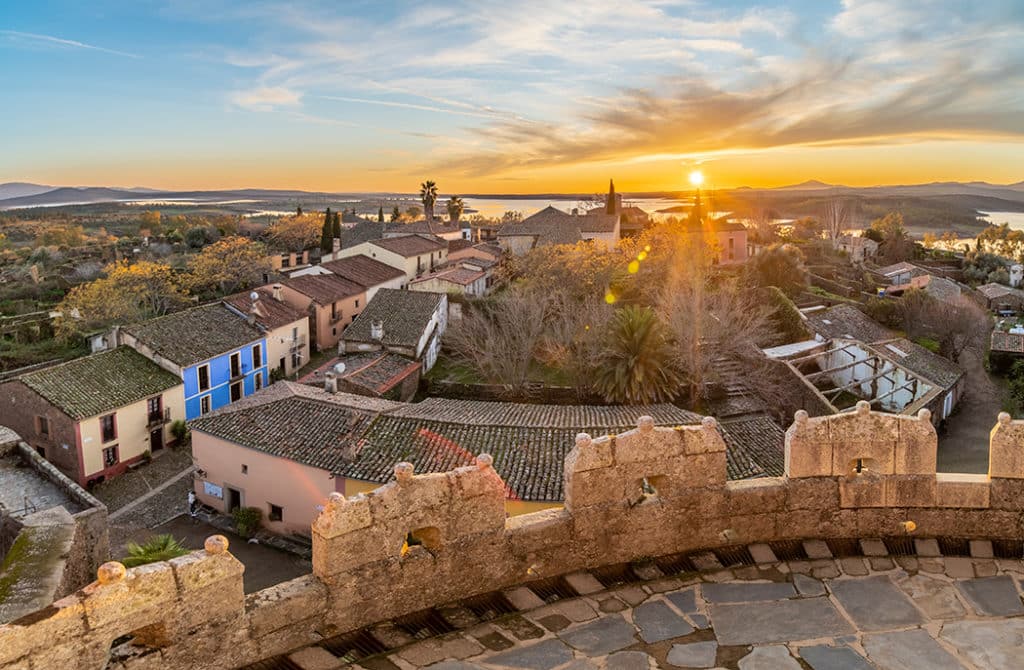
Over the next 20 years, the town fell into disrepair. But in 1980, after the fall of Franco’s regime, Granadilla was declared a Historical and Artistic Site of Importance, and much of its cityscape has been restored, including its wonderful city walls.
The walls of Granadill are of Almohad origin and are considered to be some of the best-preserved walls of this kind in Spain. They have two entrances: one through the castle and one on the opposite side of the wall. You can walk the entire perimeter in about 15 minutes.
One of the most unusual things in Granadilla is the eery quietness of its streets. Unlike most of the walled cities on this list that have buzzing old towns, Granadilla’s medieval ghost town leaves you alone with your thoughts.
Granadilla is an easy day trip from Cáceres or a longer day trip from Madrid (3-hrs away).
What not to miss in Granadilla
- The Castle of Granadilla – a small 16th-century castle with four towers and fantastic views from the battlements.
- Main Square – the heart of the old town with colourful rustic houses
- Church of the Assumption – a 15th-century church that is still active today
Peniscola (Valencia)
Perched high on a 64-meter-high rocky promontory, seemingly surrounded by the Mediterranean Sea, the walled city of Peniscola is more of a fishing village than a city. A village with stunning medieval architecture that is.
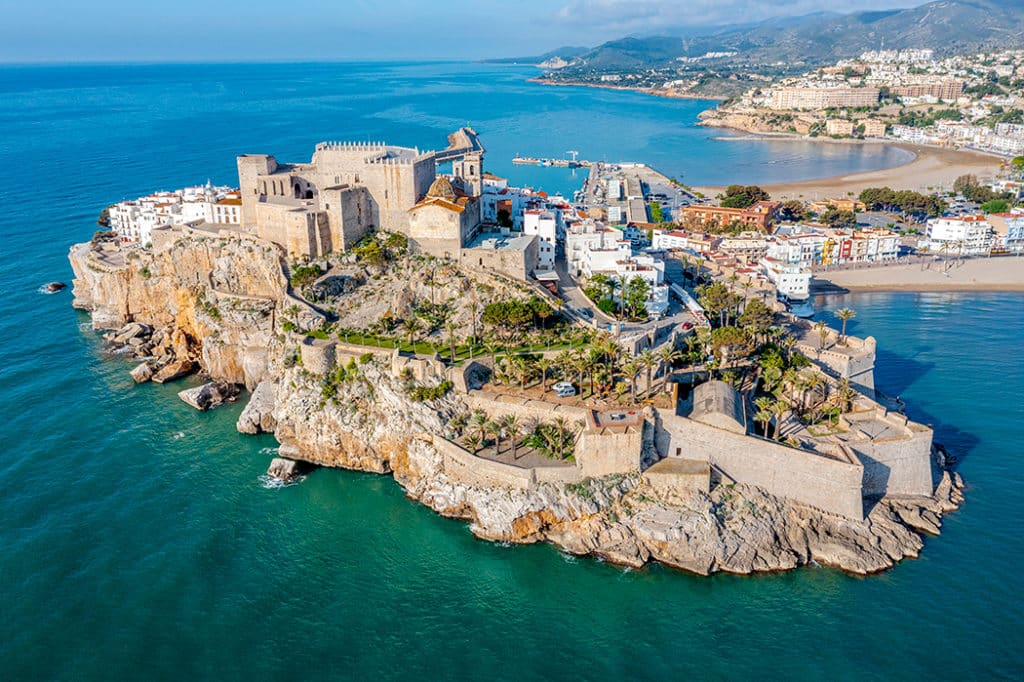
The focal point of Peniscola is Papa Luna Castle. Built by the Knights Templar In the 13th century on the foundations of an Arab fortress, the castle was home to the exiled Pope Benedict XIII. In the contemporary world, the castle is more famous as the filming location for HBO’s Game of Thrones. It appeared in season 4 as the slave city of Meereen when Daenerys Targaryen came to live there.
The tiny Old Town is surrounded by defence walls which were originally built by the Arabs and then strengthened and expanded over the centuries. There are three gates in the walls: the Portal Fosc, the Puerta de Sant Pere and Puerta de Santa Maria. Whichever part of the walls you visit, you’ll have sweeping views of the Mediterranean Sea and the snow-white old town of Peniscola.
Located along Costa del Azahar between Barcelona and Valencia, Peniscola can be visited from either city. It’s a 1.5-hour high-speed train ride from Barcelona and a 2 hours train ride from Valencia. Or you can visit Peniscola on an organized day tour from Valencia.
What not to miss in Peniscola
- El Bufador – a deep cavity in the cliff formed by the waves near the castle’s San Pedro Gate.
- Casa de las Concas – a two-story house with bright blue doors and window frames, with a facade covered entirely by shells.
- Tour of Papa Luna Castle – a rich history and jaw-dropping views
Buitrago del Lozoya (Region of Madrid)
Just 74 km from Madrid, Buitrago del Lozoya is one of the most accessible walled cities in Spain. It is a gorgeous medieval town surrounded by majestic defence walls built by the Arabs.
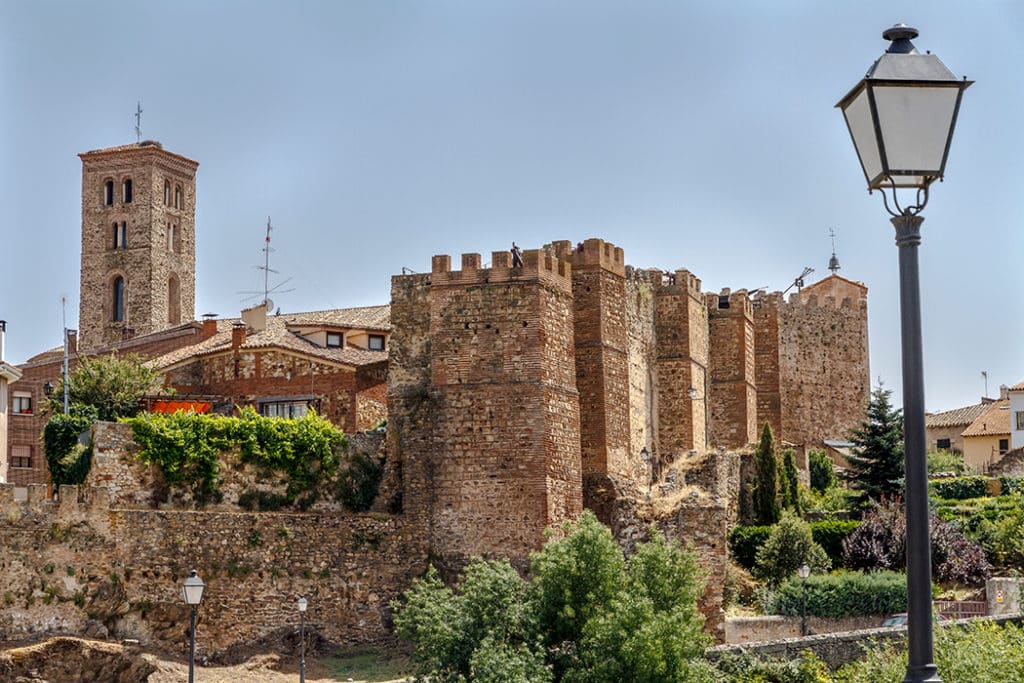
The city walls of Buitrago rise above the Lazaya River and protect the Alcazar (Castle), the Church of Santa María del Castillo, the Clock Tower and a modern addition of the Pablo Picasso Museum.
One of the most interesting sections of the Buitrago walls is La Coracha, a stretch of wall going into the river to provide secure access to fresh water for the inhabitants. You can see this section from the Alcazar, which forms part of the walls.
To get a panoramic view of the walled city, visit the 15th-century Puente del Arrabal bridge outside the walls.
Buitrago del Lozoya is an easy day trip from Madrid. It takes about 45 minutes to reach it by bus or by car.
What not to miss in Buitrago del Lozoya
- The Alcázar – a 15th-century castle with seven towers that offer magnificent views of the town and the walls.
- Church of Santa María del Castillo – a 14th-century Gothic church with the original medieval bell tower.
- Picasso Museum – a collection of works by Pablo Picasso owned by Eugenio Arias, who used to be Picasso’s barber and friend.
Alhambra – Granada (Andalusia)
The magnificent UNESCO World Heritage-listed Alhambra complex is a walled city within the city of Granada. Rising above Granada on a high ridge Alhambra is enclosed by 1,730 meters of defence walls and thirty towers.
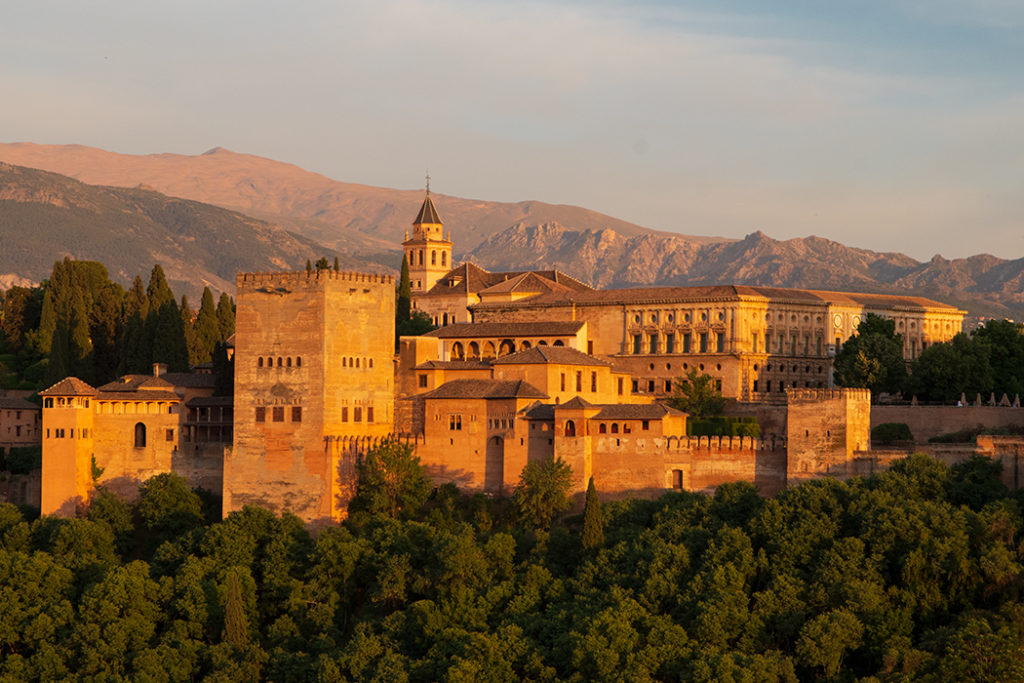
Home to the exquisite Nasrid Palaces, Alhambra can be entered via four monumental gates. The best way to appreciate the Alhambra walls is by visiting the towers of the Alcazar. The views from the top of these towers sweep over Granada’s old town on one side and stretch all the way to the snowy peaks of the Sierra Nevada mountains on the other.
One thing to consider when planning a visit to Alhambra is that you need to book your entry tickets a few months in advance. If you miss out, consider booking a guided tour of Alhambra.
Granada is a 3.5hr train ride from Madrid, so it’s best to stay at least one day in Granada. It would be too long a day trip, and you would miss the best time for visiting Alhambra, which is the first thing in the morning. You could also rent a car in Granada and explore the wider region, including the Sierra Nevada mountains.
What not to miss in Granada
- Nasrid Palaces – an exquisite complex of opulent palaces built by the Nasrid dynasty that ruled in Granada from 1230 until 1492
- Alhambra Alcazar – a monumental fortress part of the Alhambra citadel wall
- Generalife Gardens – stunning gardens, part of the summer palace of the Nasrid rulers
- Sacromonte Caves – a complex of caves that were inhabited by Granada’s gypsies until the 1960s
Besalu (Catalonia)
Besalu is one of Catalonia’s best-preserved medieval walled towns. Large sections of its walls that were built between the 12th and 14th centuries are still intact, including the 14th century Portal del Horts (Mill Gate), named for its proximity to the irrigation channel that borough water to the mills.
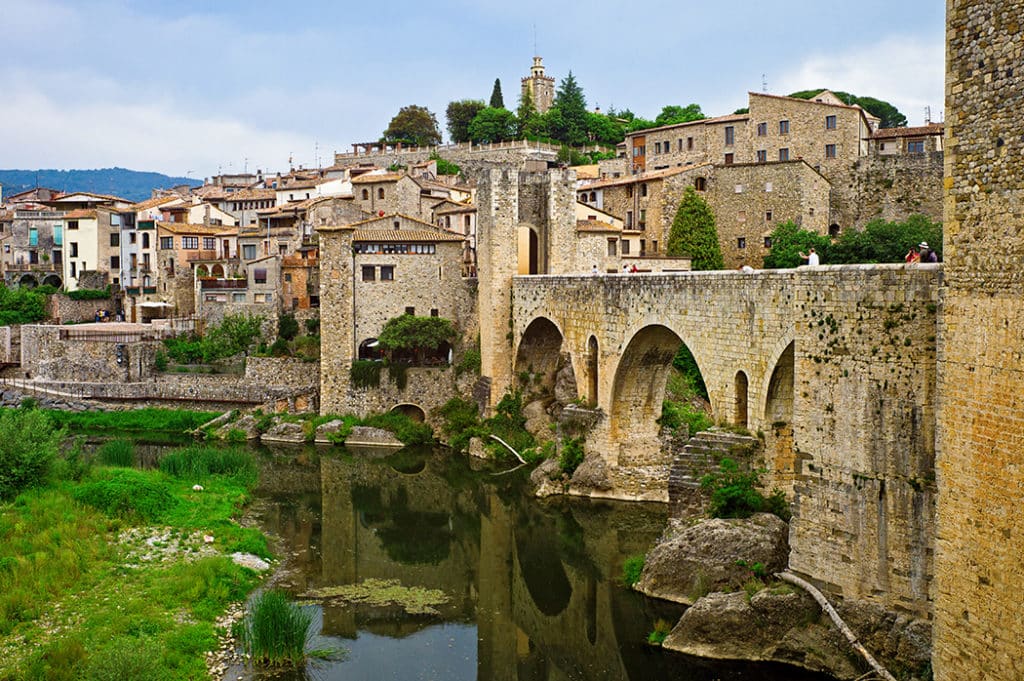
A curious bit of trivia about Besalu is that from 894 to 1111, Besalú was an independent country with its own ruling dynasty. After 1111, the town was amalgamated into the county of Barcelona.
Besalu can easily be visited on a day trip from Girona or Barcelona. The train is much quicker than a bus, so it’s best to take a train from Barcelona to Girona and then a bus to Besalu. Alternatively, you can visit the town on a day tour from Barcelona.
What not to miss in Besalu
- Pont Vell bridge – 12th-century Romanesque bridge with seven arches and two towers.
- Church of Sant Vicente de Besalu – 10th-century Romanesque church
- Jewish Baths & Synagogue – 12th-century baths located near the old bridge
Cordoba (Andalusia)
Cordoba gets an honorary mention in this guide, as it’s not technically a walled city anymore. But for most of its history, Cordoba had been surrounded by defence walls. First Roman, then Moorish. You can still see an impressive section of the Arab gate at Almodovar Gate in Juderia.
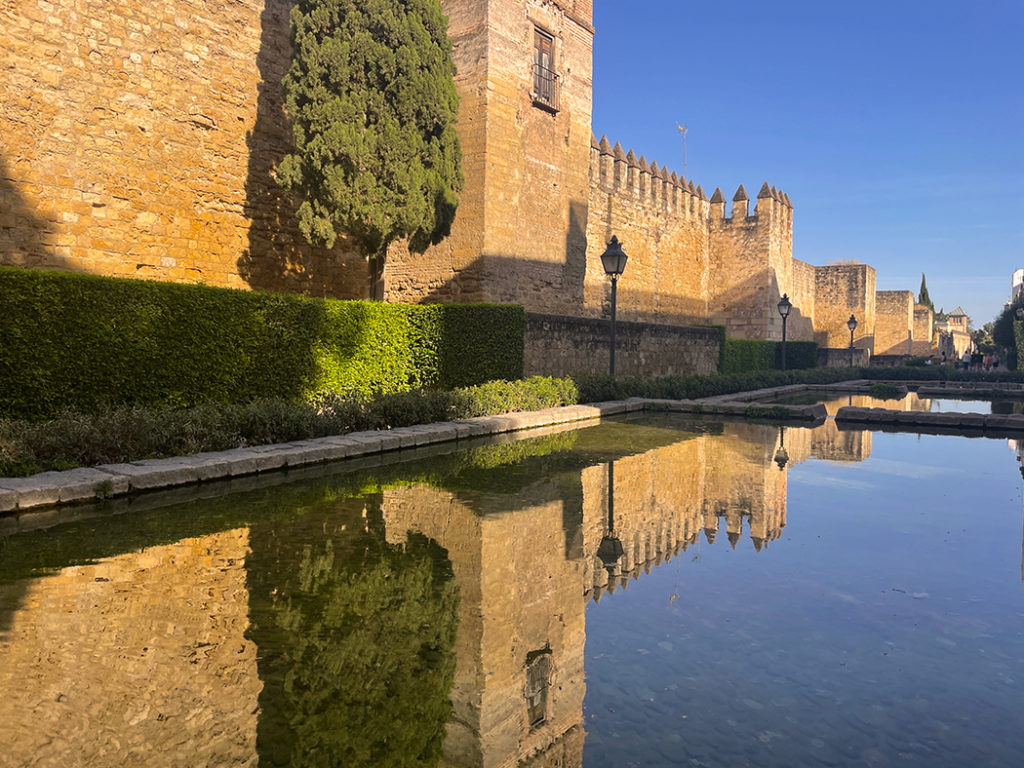
The remnants of the Roman wall of Cordoba can be seen by the Roman Temple and along Calle San Fernando where it was exposed when La Ermita de la Aurora chapel crumbled to the ground.
Once the capital of a Roman province and then of the Arabic kingdom of Al-Andalus, Cordoba has been at the centre of many major events in Spanish history. And its architectural heritage is unparalleled in all of Spain.
Cordoba’s old town is bigger than most of the cities in this guide, and it’s best to plan a two or three-day itinerary for Cordoba. But if you are short on time, you can visit Cordoba on a day tour from Granada or from Seville.
What not to miss in Cordoba
- Mezquita – enormous 8th-century mosque famous for its forest of columns and for the baroque cathedral built right into the centre of it
- Roman Bridge – 2,000-year-old bridge over the Guadalquivir River
- Cordoba Patios – adorable courtyards adorned with potted flowers and various water features.
- Cordoba Alcazar – 14th-century fortress palace
And there you have it – 15 of the most picturesque walled cities in Spain to choose from. You could include a visit to a few of these towns in your next trip to Spain or plan an entire itinerary around medieval cities and towns.
More on Exploring Spain
- 15 Stunning Waterfalls in Spain to Add to Your Bucket List
- Alicante Old Town – The Charming Barrio Santa Cruz
- Watching Iberian lynx in Sierra de Andujar Natural Park, Spain
- 8 Amazing Things to Do in Segovia on a Day Trip from Madrid
- Discover Madrid Old Town: From the Moors to the Austrians
- Malaga Old Town: Where Romans, Moors and Picasso Meet
- 5 Gorgeous Hotels in Granada to Consider for your Next Trip
- Discover Moorish Granada in One Day on This Self-Guided Walk
- Sacromonte Caves: The Best-Kept Secret in Granada
- 17 Fabulous Weekend Breaks in Spain: Must-See Destinations and Hidden Gems

